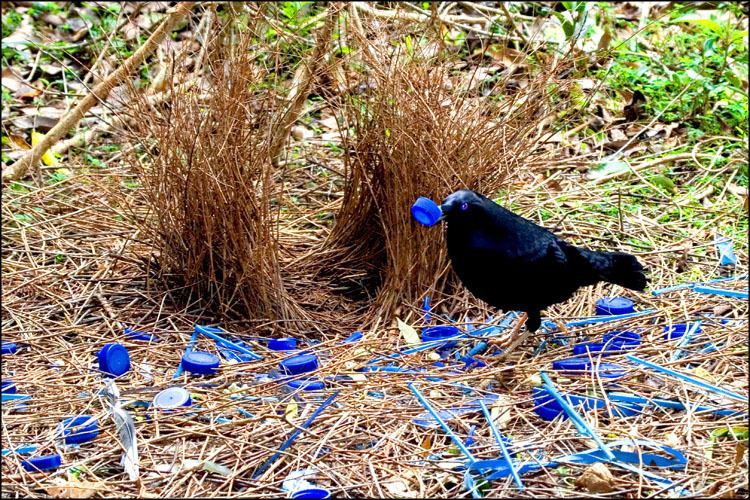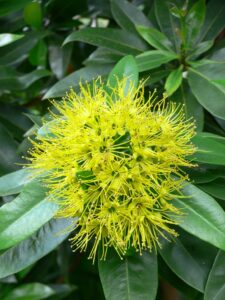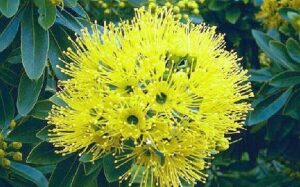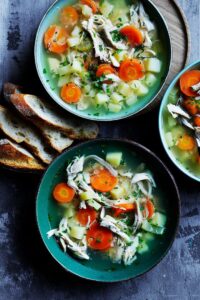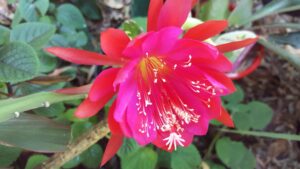Such interesting birds. An original post was done about Bowerbirds in January 2018 but thought it could do with a revamp and repost. Currently we have some a busy Satin Bowerbird constructing a bower in our garden at the moment and thought there may be other gardeners experiencing the same.
David Attenborough in this clip discusses Animal behaviour of the Australian Bowerbird:
The research for this post was prompted by a question at a recent Garden Club outing – ‘which direction do bower birds construct their bowers’? Of the people there, no unequivocal answer was forthcoming. So here goes folks!
Habitat
Bowerbirds live mainly along a 250 kilometre wide fringe along the eastern coastline from Victoria through New South Wales and up into southern Queensland. There is also another 500 kilometre strip in northern Queensland. The break between these areas is mainly due to urbanisation and lack of suitable forest conditions.
New South Wales Bowerbird types
There are four Bowerbirds found in New South Wales – Regent Bowerbirds, Satin Bowerbirds, Spotted Bowerbirds and Green Catbirds.
Regent Bowerbird
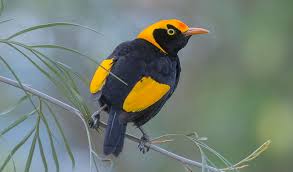
Their head, back and flight feathers of the male are coloured in a rich golden-yellow with basically the remainder being black with a purple sheen. Its forehead is sometimes tinted crimson and has bright yellow eyes. These male bowerbirds moult into their plumage when 4 years old. Until then he is very like a female Regent Bowerbird. The female is coloured in shades of dull brown, olive-brown or yellow brown on the upper parts of her body and pale buff with brown mottling underneath.
Satin Bowerbird
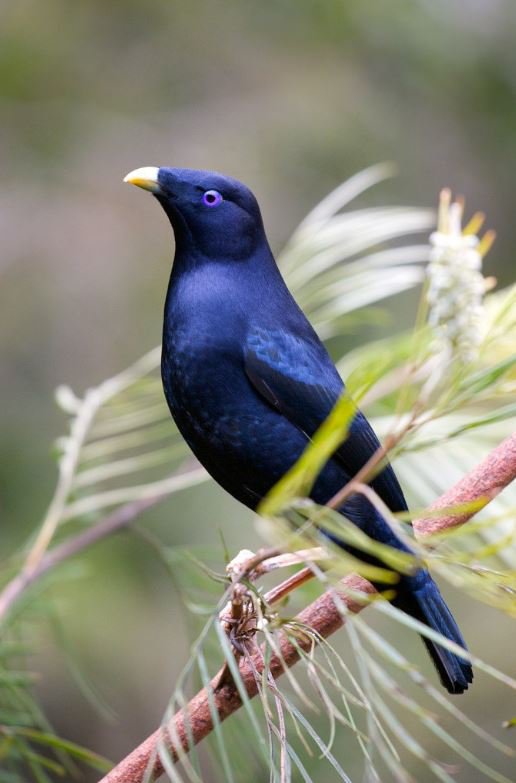
Both male and female Satin Bowerbirds have bright lilac-blue eyes, but their similarities end there! The mature male is about 30 centimetres long, with his plumage black with a glossy purple-blue sheen. He comes into his adult plumage during his seventh year, until then his plumage resembles that of the female.
She is slightly smaller and is coloured green, grey-green, dusky brown and dark brown. Her underbody is buff to cream, marked with dark olive-grey to dusky grey crescents.
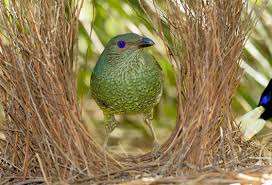
Female Satin Bowerbird
Spotted Bowerbird
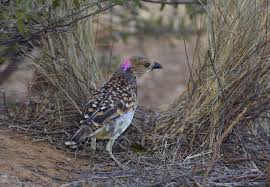
Both the male and female Spotted Bowerbirds have a bottled brown appearance with a bar of lilac on the back of their necks. The mottled plumage ranges from fawn-brown with dark spots on the neck to a dusky-brown or black with buff spots on the back and wings.
Green Catbird

The Green Catbird, another member of the Bowerbird family, gets its name from its cat-like wailing call. Males and females are various shades of green, flecked with black on the head and face, white on the nape, neck and wing tips – their eyes are red.
Bower Building
With the exception of Green Catbirds (who do not construct bowers) Bowerbirds build elaborate ‘avenue bowers’ comprised of two walls of twigs leading to a display court where he ‘struts his stuff’ performing displays for females. He decorates this display court with trinkets to attract females. The actual bower is ‘painted’ with charcoal and their saliva coloured from fruits, grasses and leaves. A general rule of thumb is that he paints in a colour similar to his own plumage – for the Regent Bowerbird, yellow; Satin Bowerbird, blue; Spotted Bowerbird, red/brown. Trinkets for the display court vary as well – the Regent Bowerbird decorates with red black/yellow brown; Satin Bowerbird with predominately blue with some yellow or green objects as well; Spotted Bowerbird with white/pale green and the Green catbirds may decorate a cleared area with some leaf material.
To show this display court off to best advantage, the bower is usually constructed with a north-south orientation. So I guess that answers the question asked at the outing! However, in closed-canopy forests, bowers are built near canopy gaps so that light reaching the forest floor illuminates the male and his wonderful bower. It has been observed that the same bower has been used for many years by the male Bowerbird.
Feeding and Diet of the Satin Bowerbird
Satin Bowerbirds feed mostly on fruits throughout the year – we have observed a female bowerbird enjoying the Clivia seeds in our garden. During summer (breeding season) the diet is supplemented with a large number of insects, while leaves are often eaten during the winter months.
Communication
Satin Bowerbirds have an amazing array of sounds, including whistles, buzzing and hissing – they are also good at minicry. We have noticed the male in our garden gives a loud decending ‘weeoo’ call.
Breeding behaviour
The Satin Bowerbird will be discussed here as he is perhaps the best known of all the bowerbirds in Australia and is common on the Coffs Coast. This notoriety most probably is because of its practice of building and decorating a bower to attract females – this construction consists of two parallel walls of sticks on the ground and is used as a courtship arena during the breeding season – not used as a nest.
He decorates this bower with bright blue coloured objects that he collects – in our garden we have place blue objects for his selection including blue clothes pegs, broken blue seals from milk containers and straws, he is even doing some gardening by placing small bits of sedum in the bower.
A mixture of chewed vegetable matter mixed with saliva is used to paint the walls of the bower – the bower owner meticulously maintains it throughout the year. Both mature and immature males build bowers and display them to prospective females.
When a female arrives at the bower the male enthusiastically leaps into a ritualized display of exaggerated movements, such as strutting and bowing with his wings outstretched and quivering. One of the bower decorations is usually carried in the male’s bill during this performance and he will offer the female this object to the female while making hissing, chattering and scolding sounds. If impressed, the female enters the bower avenue to mate and then goes off to perform nesting duties on her own, while the male readies himself for courting more prospective females as Bowerbirds are polygynous and may mate with a number of females during one season.
Lifespan of Bowerbirds
Bowerbirds have high average lifespans compared to other bird families, living up to 20 to 30 years.
The nest
The female constructs a loose nest of sticks in a tree or bush (up to 30 – 35 metres above the ground) the male does not participate at all in nest construction.
For the Satin Bowerbird the breeding season is from August until January. She lays 2 to 3 pale brown with darker markings eggs which she will incubate for 21 days. The chicks leave the nest when they are 17-21 days old however are dependent for food on their mother for several more weeks. They are reproductively mature at the age of 7 years.

